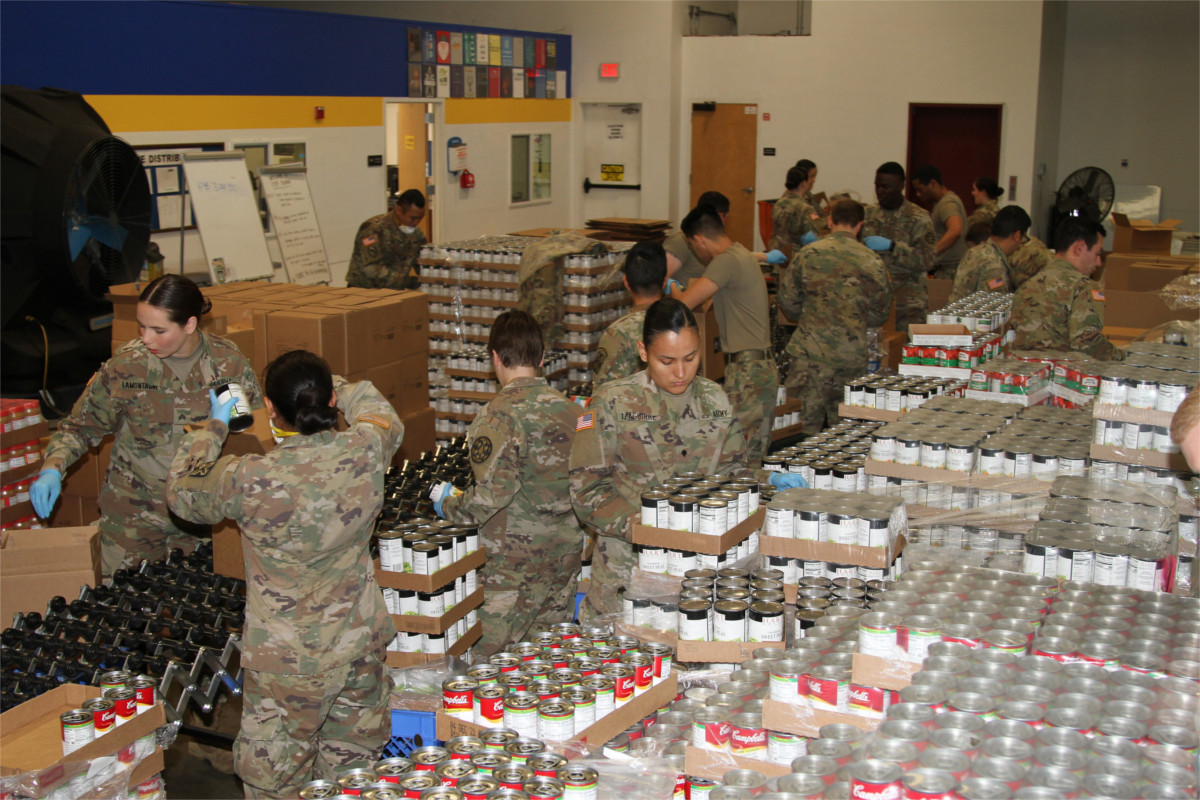
Food insecurity in households with children under 18 has increased by about 130 percent from 2018 to today, according to The Hamilton Project. (Eddie Siguenza/California Army National Guard)
With supply chains still badly disrupted from the pandemic, farmers have been forced to let crops rot in fields, euthanize livestock, and dump thousands of gallons of surplus milk each day.
Meanwhile, unemployment has surged past post-World War II record levels and demand at food banks and school meal programs appears bottomless.
On the surface, the disconnect between these two problems is maddening. But getting food waste reclaimed, processed, packaged, shipped and delivered to those in need is no simple task.
On May 9, President Donald Trump said the US would start buying $3 billion in surplus dairy, meat and produce from farmers to help stanch hunger.
The USDA said in April that it would purchase $3 billion of ag products, with $1.2 in contracts for the so-called “Farmers to Families Food Box Program.” The USDA plans to work with local distributors to package the food into boxes and deliver them to food banks and other hunger relief groups. The agency said on its website that the program would include $100 million a month in fresh fruits and vegetables, $100 million a month in dairy and $100 million in meat.
But a Farm Bureau press release said funding had already exceeded initial estimates, “due to high interest and need. The program will purchase $461 million in fresh fruits and vegetables, $317 million in dairy, $258 million in meat and $175 million in a combination box of fresh produce, dairy or meat products.”
“These food purchases will help the hungry while providing income to farmers and ranchers who have seen some markets for their food disappear during the COVID-19 pandemic,” said Zippy Duvall, the president of the American Farm Bureau Federation. Initial contracts will distribute food from May 15 through June 30.
Meanwhile, as reported in The New York Times, the White House has eschewed some of the simplest ways to feed those in need, such as expansion of school meals and food stamp benefits, or waiving work requirements needed to qualify for benefits.
The USDA plans to send 5 million food boxes per week to rural areas, and has issued waivers to states to give more flexibility to food assistance programs. Those moves include allowing online food stamp purchases and extending benefits to more working poor families, while keeping the those most in need at the same levels. Many of those waivers will expire at the end of May, despite Congress having given the department the ability to issue waivers through September.
The agency has also turned down pleas from states asking for waivers on the 20-hour weekly work requirement for college students who apply for food stamps. Congress rejected a plan to increase SNAP benefits by 15 percent, and on May 12 the government announced it would appeal a court decision that blocked more stringent work requirements for food stamps. Those requirements would have taken effect last month, and taken SNAP benefits away from 700,000 people.
Read More:
- USDA’s ‘Food Box’ Program To Ramp Up Next Week, Trump Says (Bloomberg)
- As Hunger Spreads With Pandemic, Government Takes Timid Steps (New York Times)
- Trump Says US Will Purchase $3 Billion In Agricultural Products From Farmers (The Hill)
- Full Fields, Empty Fridges (Washington Post)
- The COVID-19 Crisis Has Already Left Too Many Children Hungry in America (The Hamilton Project)












